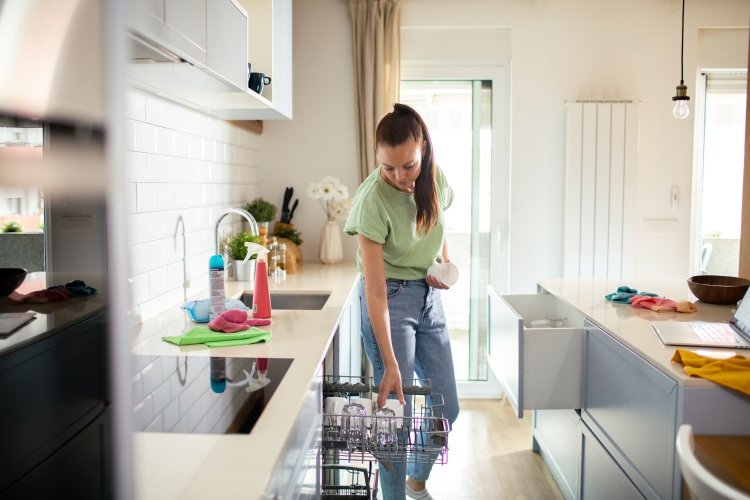A NEAT way to burn calories:
To burn calories, you must be exercising, right? Well, the answer to this is yes and no. We burn calories whatever we are doing, and yes, exercise is a great way to burn EXTRA calories. But what if there were a NEAT way to burn even more EXTRA calories, I’m sure that would come in handy.
So, what is NEAT?
NEAT stands for Non-Exercise Activity Thermogenesis. MAYO CLINIC defines NEAT as the energy expended that is not from sleeping, eating or sports-like exercise. It ranges from the energy spent walking to work, typing, performing yard work, undertaking agricultural tasks, and fidgeting.
What do the experts say?
According to the National Academy of Sports Medicine (NASM), if NEAT can be combined successfully with properly programmed exercise and nutrition, then NEAT can contribute to an increased level of calories burnt. Therefore, burning more fat.

Benefits of NEAT
- Calorie Expenditure: NEAT contributes significantly to daily energy expenditure. Even small movements, such as pacing while talking on the phone or taking the stairs instead of the elevator, can add up to substantial calorie expenditure over time.
- Weight Management: Incorporating NEAT into daily routines can aid in weight management and weight loss. By increasing daily energy expenditure through non-exercise activities, individuals can create a calorie deficit, which is essential for weight loss when combined with a balanced diet.
- Metabolic Health: NEAT plays a role in improving metabolic health by enhancing insulin sensitivity and glucose metabolism. Regular NEAT activities help regulate blood sugar levels and may reduce the risk of developing insulin resistance and type 2 diabetes.
- Cardiovascular Health: Engaging in NEAT activities, such as walking or standing, promotes cardiovascular health by improving circulation, lowering blood pressure, and reducing the risk of cardiovascular diseases.
- Muscle Tone and Strength: NEAT activities involve various muscle groups and can contribute to muscle tone and strength, especially in the lower body. Activities like walking, gardening, or household chores help maintain muscle mass and functionality.
- Mood and Mental Health: NEAT has been associated with improved mood and mental well-being. Regular physical activity, even in the form of non-exercise movements, can reduce stress, anxiety, and depression, while enhancing cognitive function and overall mental health.
- Joint Health and Mobility: Engaging in NEAT activities supports joint health and mobility by promoting flexibility, range of motion, and lubrication of joints. Activities like walking or stretching help maintain joint function and reduce the risk of musculoskeletal disorders.
- Longevity: Studies suggest that individuals who engage in higher levels of NEAT tend to live longer and have a reduced risk of mortality from all causes. Incorporating more movement into daily life promotes overall health and longevity.
Overall, integrating NEAT activities into daily routines offers numerous health benefits, including weight management, improved metabolic and cardiovascular health, enhanced mood and mental well-being, and longevity. By adopting a more active lifestyle and incorporating movement throughout the day, individuals can reap the benefits of NEAT and improve their overall health and well-being.

A NEAT way to burn calories FAQ
- What is NEAT? NEAT stands for Non-Exercise Activity Thermogenesis. It refers to the energy expended during daily activities such as walking, standing, fidgeting, and household chores, excluding purposeful exercise.
- How does NEAT contribute to calorie expenditure? NEAT accounts for a significant portion of total daily energy expenditure. Even small movements, such as tapping your foot or pacing while on the phone, can contribute to calorie burning throughout the day.
- What are examples of NEAT activities? NEAT activities include walking, taking the stairs, gardening, cleaning the house, standing while working, cooking, and other forms of physical movement performed in daily life.
- How can I increase my NEAT? There are many ways to increase NEAT, such as incorporating more movement into your daily routine. Some strategies include taking short walks during breaks, standing instead of sitting whenever possible, doing household chores, and opting for active transportation like walking or biking.
- Does NEAT help with weight loss? Yes, increasing NEAT can contribute to weight loss or weight management by increasing daily calorie expenditure. Creating a calorie deficit, by burning more calories than consumed, is essential for weight loss, and NEAT can help achieve this.
- Is NEAT important for overall health? Yes, NEAT is important for overall health as it promotes physical activity and energy expenditure throughout the day. It can help improve metabolic health, cardiovascular health, joint mobility, mood, and mental well-being.
- Can NEAT activities replace exercise? While NEAT activities are beneficial for overall health and can contribute to calorie expenditure, they should not replace structured exercise entirely. Both NEAT and structured exercise have unique benefits and should be incorporated into a well-rounded fitness routine.
- How can I track my NEAT? Tracking NEAT can be challenging since it encompasses various daily activities. However, wearable fitness trackers or smartphone apps that monitor steps taken or active minutes can provide insight into overall physical activity levels, including NEAT.
- Are there any downsides to NEAT? While NEAT is generally beneficial for health, excessive sedentary behavior can negate its effects. Prolonged sitting or inactivity may reduce NEAT and contribute to health problems such as obesity, cardiovascular disease, and metabolic disorders.
- How much NEAT should I aim for each day? There isn’t a specific target for NEAT, as it varies depending on individual factors such as age, weight, occupation, and lifestyle. However, aiming to incorporate more movement into your daily routine and reducing sedentary time can help maximize NEAT and promote overall health.

A NEAT way to burn calories – My experience
I regularly track my calories burned via NEAT. You’d be surprised how many you can burn! This increased awareness leads me to focus on getting more NEAT into my daily routine. My preference with NEAT is to use it to increase my daily total calorie burn; however, there is another way to use NEAT, that I will come onto shortly.
Here are a few examples of my calorie burn via NEAT.
- Walking my son to school (parking a couple of streets away rather than the car park) 76 calories, 10.01 minutes.
- Going to the shop for milk 98 calories, 11.22 minutes
- Housework (putting clothes to dry/ironing/emptying dishwasher) 323 calories, 62.23 minutes
So, as you can see depending upon how much milk you need or how much housework needs doing, then you can rack up lots of extra calories burnt.
My advice.
As for NEAT, my advice would be to do more. For that matter, moving more (safely / within our limits) is general advice that I would offer to most individuals.
Where NEAT is concerned, the first key is awareness. If you have a heart rate monitor start tracking how many calories you burn doing simple everyday tasks. You will soon see how quickly this all mounts up. If you don’t have a heart rate monitor, a simple pedometer available on smartphones will track your increased steps, enabling you to track your increased movement levels.
The second piece of advice would be to look for opportunities to do more, take the stairs, walk to the local shops and when it is safe (COVID permitting) do the weekly shop on foot. The overarching message here is to do more!
Thirdly, when it comes to NEAT, you may wish, as I do to use your calorie burn through NEAT to top up daily calorie burn, or you could save your tasks to do on rest days. That will mean you still get a decent calorie burn whilst resting from planned exercise. Either way, it all counts, so crack on with it.
Doing the dishes has an entirely new perspective now!


Recent Comments